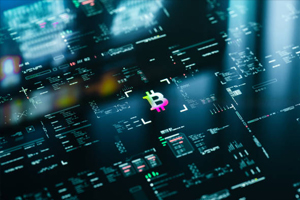What is decentralized finance (DeFi) and how does it work?
Unlock the future of finance with our in-depth guide to Decentralized Finance (DeFi) Explore blockchain-powered innovations, risks, and the transformative potential of decentralized financial ecosystems
Welcome to the immersive exploration of Decentralized Finance (DeFi), a groundbreaking paradigm reshaping the financial landscape. In this comprehensive guide, we delve into the core concepts, innovations, and challenges that define the decentralized financial ecosystem.
Decentralized Finance, powered by blockchain technology, represents a departure from traditional financial systems. It operates on principles of transparency, accessibility, and inclusivity, offering financial services without reliance on intermediaries. As we embark on this journey, we'll uncover the key components of the DeFi ecosystem, including smart contracts, decentralized exchanges, lending platforms, and the intriguing concept of decentralized autonomous organizations (DAOs).
Our exploration extends to the potential benefits and risks associated with DeFi investments, shedding light on the dynamic market sentiment and the influence of technological developments. Additionally, we'll address crucial aspects like security measures, regulatory considerations, and the future trends that may shape the evolution of Decentralized Finance.
Whether you are a seasoned crypto enthusiast or a newcomer eager to understand the intricacies of DeFi, this guide aims to provide a comprehensive breakdown. Join us on this journey through the decentralized realm, where financial innovation meets the principles of decentralization, autonomy, and community-driven governance.

Understanding Decentralized Finance (DeFi)
1. Introduction to DeFi:
Explore the fundamental concept of decentralized finance (DeFi) and its emergence as a paradigm shift in the financial industry. Discuss the decentralization aspect, contrasting it with traditional centralized financial systems.
2. Core Principles of DeFi:
Examine the key principles that underpin DeFi, such as open access, transparency, and interoperability. Discuss how these principles contribute to the democratic and inclusive nature of decentralized finance.
3. Blockchain Technology in DeFi:
Delve into the role of blockchain technology as the foundational infrastructure for DeFi. Explore how smart contracts, built on blockchain platforms like Ethereum, enable decentralized applications (DApps) to facilitate financial activities.
4. DeFi vs. Traditional Finance:
Compare and contrast DeFi with traditional finance models. Highlight the advantages and disadvantages of decentralized finance, including aspects such as accessibility, efficiency, and financial inclusion.
5. Use Cases of DeFi:
Explore practical applications of DeFi across various financial services, including lending, borrowing, decentralized exchanges (DEX), yield farming, and decentralized autonomous organizations (DAOs). Provide real-world examples to illustrate the versatility of DeFi.
6. Risks and Challenges in DeFi:
Discuss the inherent risks and challenges associated with DeFi, including smart contract vulnerabilities, market volatility, and regulatory uncertainties. Highlight the importance of risk management for participants in the DeFi ecosystem.
7. Decentralized Exchanges (DEX) Explained:
Focus specifically on decentralized exchanges (DEX) as a crucial component of DeFi. Explain how DEX operates, the benefits it offers in terms of liquidity and user control, and its impact on traditional centralized exchanges.
8. DeFi Lending and Borrowing Platforms:
Explore the dynamics of DeFi lending and borrowing platforms. Discuss how these platforms enable users to lend or borrow assets without the need for traditional financial intermediaries. Highlight interest rates, collateralization, and risk management in DeFi lending.
9. Yield Farming Strategies:
Examine the concept of yield farming as a strategy to maximize returns in DeFi. Discuss how users can earn additional tokens by providing liquidity or participating in various DeFi protocols. Explore the associated risks and rewards of yield farming.
Understanding decentralized finance (DeFi) involves exploring its foundational principles, technology, use cases, risks, and specific components like decentralized exchanges, lending platforms, and yield farming. This breakdown provides a comprehensive overview of the dynamic DeFi ecosystem.
Overview of Decentralized Finance
1. Definition of Decentralized Finance (DeFi):
Provide a clear definition of DeFi, emphasizing its decentralized nature and departure from traditional financial systems. Highlight the goals of inclusivity, accessibility, and transparency that define the DeFi space.
2. Historical Evolution of DeFi:
Explore the historical development of decentralized finance, from the early experiments to the significant growth seen in recent years. Discuss key milestones, projects, and technological advancements that have shaped the DeFi landscape.
3. Core Components of the DeFi Ecosystem:
Break down the essential components that make up the DeFi ecosystem, including smart contracts, decentralized applications (DApps), and blockchain infrastructure. Explain how these elements work together to create a decentralized financial environment.
4. Advantages of DeFi:
Highlight the advantages of decentralized finance compared to traditional financial systems. Discuss benefits such as accessibility, reduced reliance on intermediaries, increased financial inclusion, and the potential for higher returns on investments.
5. Decentralization vs. Centralization in Finance:
Draw a comparative analysis between decentralized and centralized finance models. Discuss the implications of decentralization for user control, security, and censorship resistance, contrasting these features with the centralized counterparts.
6. Tokenization in DeFi:
Explore the concept of tokenization as a fundamental aspect of DeFi. Discuss how assets are represented as tokens on blockchain networks, enabling efficient and programmable financial transactions. Provide examples of tokenized assets in DeFi.
7. Role of Decentralized Autonomous Organizations (DAOs):
Examine the role of Decentralized Autonomous Organizations (DAOs) in the DeFi ecosystem. Discuss how DAOs operate as community-driven entities, making collective decisions without traditional hierarchical structures.
8. Interoperability in DeFi:
Discuss the importance of interoperability among different DeFi platforms and blockchain networks. Explore how interoperability enhances the overall efficiency and accessibility of decentralized financial services.
An overview of decentralized finance (DeFi) encompasses its definition, historical evolution, core components, advantages, the decentralization-centralization dichotomy, tokenization, the role of DAOs, and the significance of interoperability. This comprehensive breakdown provides a foundational understanding of the dynamic DeFi landscape.
Key Components of DeFi Ecosystem
1. Smart Contracts:
Define smart contracts and their central role in the DeFi ecosystem. Explain how these self-executing contracts facilitate automated and trustless financial transactions by enforcing predefined rules without the need for intermediaries.
2. Decentralized Applications (DApps):
Explore the concept of decentralized applications (DApps) and their contribution to DeFi. Discuss how DApps, built on blockchain platforms like Ethereum, provide a user-friendly interface for accessing various decentralized financial services.
3. Blockchain Infrastructure:
Examine the role of blockchain infrastructure, particularly Ethereum, in supporting the DeFi ecosystem. Highlight the decentralized and secure nature of blockchain technology as the foundation for building and executing financial protocols.
4. Decentralized Exchanges (DEX):
Focus on decentralized exchanges (DEX) as critical components of DeFi. Discuss how DEX platforms enable peer-to-peer trading of digital assets without the need for centralized intermediaries, providing users with control over their funds.
5. DeFi Lending and Borrowing Platforms:
Explore platforms that facilitate decentralized lending and borrowing. Discuss how these platforms connect lenders and borrowers directly, allowing users to earn interest by lending their assets or access liquidity through borrowing.
6. Yield Farming Protocols:
Explain the concept of yield farming and its role in DeFi. Discuss how users can optimize their returns by participating in various DeFi protocols, providing liquidity, and earning additional tokens as rewards.
7. Decentralized Autonomous Organizations (DAOs):
Explore the emergence of Decentralized Autonomous Organizations (DAOs) in DeFi. Discuss how DAOs operate as community-driven entities, making governance decisions collectively, and their impact on shaping the direction of DeFi projects.
8. Oracle Networks:
Introduce the importance of oracle networks in DeFi. Explain how these networks provide external data to smart contracts, enabling them to interact with real-world information and execute conditional actions based on accurate data.
The key components of the DeFi ecosystem include smart contracts, decentralized applications (DApps), blockchain infrastructure, decentralized exchanges (DEX), lending and borrowing platforms, yield farming protocols, Decentralized Autonomous Organizations (DAOs), and oracle networks. Understanding these components is essential for navigating the decentralized and innovative world of DeFi.
Smart Contracts and Their Role in DeFi
1. Definition of Smart Contracts:
Provide a comprehensive definition of smart contracts, highlighting their self-executing nature and the ability to enforce predefined rules autonomously. Explain how these contracts operate on blockchain networks, particularly Ethereum.
2. Automation of Financial Agreements:
Explore how smart contracts automate financial agreements by executing predefined instructions when specified conditions are met. Discuss the efficiency and transparency they bring to DeFi transactions without the need for intermediaries.
3. Programmability in DeFi:
Discuss the programmable nature of smart contracts and their role in enabling a wide range of decentralized financial services. Explore how developers utilize smart contracts to create diverse protocols for lending, borrowing, trading, and more.
4. Decentralized Autonomous Execution:
Explain how smart contracts enable decentralized autonomous execution of transactions. Discuss the decentralized nature of smart contract execution, which reduces the risk of manipulation and ensures trustless interactions among parties.
5. Security Features of Smart Contracts:
Highlight the security features of smart contracts, emphasizing their tamper-resistant nature and immutability once deployed on the blockchain. Discuss the importance of thorough code auditing to address vulnerabilities and enhance security.
6. Use Cases in DeFi:
Provide specific examples of smart contract applications in DeFi, such as decentralized lending and borrowing, automated market makers (AMMs), decentralized exchanges (DEX), and yield farming protocols. Illustrate how these applications leverage the capabilities of smart contracts.
7. Interconnectedness of Smart Contracts:
Discuss how smart contracts in DeFi often interact with each other to create complex financial systems. Explore the interconnectedness that allows users to seamlessly move assets and participate in various decentralized protocols.
8. Challenges and Innovations:
Examine the challenges faced by smart contracts in DeFi, including security concerns, scalability issues, and potential exploits. Discuss ongoing innovations and developments aimed at addressing these challenges and improving the overall functionality of smart contracts.
Smart contracts play a pivotal role in DeFi by automating financial agreements, enabling programmability, ensuring decentralized execution, offering security features, powering various use cases, fostering interconnectedness, and driving continuous innovation despite facing challenges. Understanding their multifaceted role is crucial for navigating the decentralized financial landscape.
Decentralized Exchanges (DEX) Explained
1. Definition of Decentralized Exchanges (DEX):
Provide a clear definition of DEX, emphasizing its decentralized nature in contrast to traditional centralized exchanges. Explain how DEX facilitates peer-to-peer trading of digital assets directly on the blockchain without the need for intermediaries.
2. Core Features of DEX:
Discuss the essential features that define decentralized exchanges, including user-controlled wallets, private key ownership, and the absence of a central authority. Emphasize the trustless and non-custodial nature of DEX transactions.
3. Decentralization vs. Centralization in Trading:
Explore the advantages of decentralization in trading on DEX, such as increased security, privacy, and reduced counterparty risk. Compare these benefits with the potential drawbacks of centralized exchanges, including custody risks and dependence on a single point of failure.
4. Liquidity Pools and Automated Market Makers (AMMs):
Explain the concept of liquidity pools in DEX and the role of Automated Market Makers (AMMs). Discuss how users contribute liquidity to pools, earning fees in return, and how AMMs algorithmically set prices based on the available liquidity.
5. User Experience on DEX Platforms:
Discuss the user experience of trading on DEX platforms, emphasizing the simplicity of accessing a wide range of tokens directly from personal wallets. Highlight the decentralized and permissionless nature of account creation and trading.
6. Challenges in DEX:
Examine the challenges faced by DEX, including issues related to liquidity, price slippage, and the user learning curve. Discuss ongoing efforts and innovations within the DeFi space to address these challenges and enhance the overall DEX experience.
7. Popular DEX Platforms:
Introduce some of the prominent DEX platforms in the DeFi ecosystem, such as Uniswap, SushiSwap, and PancakeSwap. Discuss their unique features, governance models, and contributions to the decentralized finance landscape.
8. Future Developments in DEX:
Explore the potential future developments in the DEX space, including scalability solutions, cross-chain interoperability, and the integration of new technologies. Discuss how these advancements aim to further improve the efficiency and accessibility of decentralized exchanges.
Decentralized Exchanges (DEX) serve as crucial components of the DeFi ecosystem, providing users with decentralized, trustless, and user-controlled platforms for trading digital assets. Understanding the core features, advantages, challenges, and future developments of DEX is essential for participants in the decentralized finance space.
DeFi Lending and Borrowing Platforms
1. Introduction to DeFi Lending and Borrowing:
Provide an overview of the DeFi lending and borrowing landscape. Explain how these platforms operate on blockchain networks, connecting lenders with borrowers in a decentralized and permissionless manner.
2. Decentralized Nature of Lending and Borrowing:
Discuss the decentralized nature of lending and borrowing in DeFi, highlighting the absence of intermediaries and the use of smart contracts to automate lending and borrowing processes. Emphasize the trustless and transparent aspects of these transactions.
3. Role of Smart Contracts:
Explore the role of smart contracts in facilitating lending and borrowing activities. Explain how smart contracts govern loan agreements, including interest rates, collateral requirements, and repayment terms, ensuring automated and secure transactions.
4. Yield Farming and Liquidity Mining:
Discuss the concept of yield farming and liquidity mining within DeFi lending and borrowing platforms. Explain how users can earn additional tokens by providing liquidity to lending pools and participating in various yield farming protocols.
5. Collateralization and Overcollateralization:
Explain the importance of collateralization in DeFi lending, where borrowers must provide assets as collateral to secure loans. Discuss the concept of overcollateralization and its role in mitigating the risk of default.
6. Popular DeFi Lending Platforms:
Introduce notable DeFi lending platforms such as Aave, Compound, and MakerDAO. Highlight their unique features, governance models, and the variety of assets supported for lending and borrowing.
7. Risks and Challenges:
Examine the risks associated with DeFi lending and borrowing, including smart contract vulnerabilities, market volatility, and the potential for liquidation. Discuss risk management strategies and ongoing efforts to enhance the security of these platforms.
8. Regulatory Considerations:
Discuss the evolving regulatory landscape surrounding DeFi lending and borrowing. Explore the challenges and opportunities related to compliance and the efforts within the industry to address regulatory considerations while maintaining decentralization.
DeFi lending and borrowing platforms play a crucial role in the decentralized finance ecosystem, offering users the opportunity to earn interest, access liquidity, and participate in innovative financial protocols. Understanding the decentralized nature, role of smart contracts, risk factors, and regulatory considerations is essential for engaging in DeFi lending and borrowing.
Yield Farming: Maximizing Returns in DeFi
1. Understanding Yield Farming in DeFi:
Define yield farming and its role in the decentralized finance (DeFi) ecosystem. Explain how participants can earn rewards, usually in the form of additional tokens, by providing liquidity or engaging in other activities on DeFi platforms.
2. Liquidity Provision and LP Tokens:
Explore the concept of liquidity provision in yield farming. Discuss how users provide liquidity to decentralized exchanges or lending protocols, receive LP (Liquidity Provider) tokens in return, and use these tokens to farm additional rewards.
3. Yield Aggregators and Optimizers:
Introduce yield aggregators and optimizers in the context of yield farming. Explain how these platforms automatically allocate assets to different DeFi protocols to maximize returns, providing users with a more efficient and hands-free approach to yield farming.
4. Risks and Considerations:
Examine the risks associated with yield farming, including impermanent loss, smart contract vulnerabilities, and the impact of market volatility. Discuss risk management strategies and the importance of conducting thorough research before participating in yield farming activities.
5. Governance Tokens and Delegated Voting:
Discuss the role of governance tokens in yield farming protocols. Explain how participants may receive governance tokens alongside farming rewards, granting them voting rights in the protocol's decision-making process. Explore the potential influence of yield farmers on the direction of DeFi projects.
6. Staking and Farming Combinations:
Explore the combination of staking and yield farming. Discuss how participants can stake tokens in a protocol, receive staking rewards, and simultaneously engage in yield farming to maximize overall returns. Highlight popular platforms that offer these combined opportunities.
7. Evolution of Yield Farming Strategies:
Examine the evolution of yield farming strategies within the DeFi space. Discuss the emergence of new farming pools, innovative incentive structures, and the continuous evolution of protocols to attract and retain liquidity providers.
8. Future Trends and Developments:
Discuss potential future trends and developments in the field of yield farming, such as the integration of layer 2 solutions, cross-chain compatibility, and the adoption of novel consensus mechanisms. Explore how these advancements may shape the landscape of DeFi yield farming.
Yield farming represents a dynamic and rewarding aspect of the DeFi ecosystem, allowing participants to maximize returns through liquidity provision, governance participation, and strategic combinations of staking and farming. Understanding the intricacies, risks, and evolving trends in yield farming is essential for those looking to optimize their participation in the DeFi space.
Decentralized Autonomous Organizations (DAOs)
1. Definition and Concept of DAOs:
Define what Decentralized Autonomous Organizations (DAOs) are in the context of blockchain and decentralized governance. Explain the fundamental concept of DAOs as entities governed by smart contracts and driven by collective decision-making from their community members.
2. Structure and Governance Mechanisms:
Explore the structural elements of DAOs, including membership, voting mechanisms, and proposal processes. Discuss the various governance models employed by DAOs, such as token-based voting, reputation systems, and delegated decision-making.
3. Use Cases and Applications:
Examine the diverse use cases and applications of DAOs across different industries. Highlight examples of DAOs involved in funding, decentralized finance (DeFi), governance of decentralized applications (DApps), and other innovative projects that leverage collective decision-making.
4. Creation and Operation of DAOs:
Provide insights into the process of creating and operating a DAO. Discuss the steps involved in launching a DAO, including smart contract development, token distribution, and the establishment of governance rules. Explore how DAOs can evolve over time to meet the changing needs of their communities.
5. Challenges and Risks:
Examine the challenges and risks associated with DAOs, including potential security vulnerabilities, decision-making conflicts, and the need for effective governance structures. Discuss real-world examples of DAOs facing challenges and the lessons learned from those experiences.
6. Decentralized Funding and Treasury Management:
Discuss how DAOs manage decentralized funding and treasury. Explore the mechanisms through which DAOs allocate funds, sponsor projects, and make strategic investments based on community decisions. Highlight successful examples of DAOs effectively managing their treasuries.
7. Legal and Regulatory Considerations:
Examine the legal and regulatory considerations surrounding DAOs. Discuss the evolving landscape of DAO regulations, potential challenges in compliance, and the efforts within the industry to establish frameworks that align with legal requirements.
8. Future Trends and Developments:
Explore the potential future trends and developments in the DAO space. Discuss innovations such as cross-DAO collaborations, improved governance tools, and the integration of DAOs with emerging technologies. Consider how these advancements may shape the broader landscape of decentralized autonomous organizations.
Decentralized Autonomous Organizations (DAOs) represent a groundbreaking approach to governance and decision-making in the blockchain space. Understanding their structure, governance mechanisms, challenges, and potential applications is essential for individuals and communities engaging in decentralized governance through DAOs.
Challenges and Risks in DeFi
1. Smart Contract Vulnerabilities:
Discuss the inherent risks associated with smart contracts in DeFi applications. Explain how vulnerabilities in the code can lead to exploits, hacks, and financial losses. Highlight notable examples of smart contract failures and their impact on the DeFi ecosystem.
2. Market Volatility and Impermanent Loss:
Examine the challenges posed by market volatility in decentralized finance. Discuss the concept of impermanent loss, particularly in liquidity provision protocols, and how sudden price fluctuations can affect the value of assets in liquidity pools.
3. Security of Decentralized Exchanges (DEXs):
Explore the security concerns related to decentralized exchanges (DEXs) in the DeFi space. Discuss the risks of potential vulnerabilities, front-running attacks, and the importance of robust security measures in ensuring the safety of user funds.
4. Regulatory Uncertainty:
Examine the regulatory challenges facing the DeFi industry. Discuss the evolving nature of regulations, compliance issues, and the uncertainties surrounding the legal framework for decentralized finance. Explore how regulatory changes can impact DeFi projects and their users.
5. Overcollateralization and Liquidation Risks:
Discuss the risk of overcollateralization in lending protocols and the potential for liquidation. Explain how borrowers must maintain a certain level of collateral to secure loans and the consequences of falling below the required threshold, leading to liquidation events.
6. Governance and Decision-Making Challenges:
Examine the challenges associated with decentralized governance in DeFi projects. Discuss potential conflicts of interest, decision-making processes, and the need for effective governance structures to address disputes and ensure the long-term sustainability of projects.
7. Oracle Risks and Price Feeds:
Explore the risks related to oracles and price feeds in DeFi applications. Discuss how inaccurate or manipulated price data from oracles can impact various protocols, leading to potential financial losses and disruptions in the functioning of decentralized financial services.
8. Scalability and Network Congestion:
Discuss scalability challenges and network congestion on blockchain networks hosting DeFi applications. Explore the impact of high transaction fees and slow confirmation times on user experience, as well as potential solutions and ongoing developments to address scalability issues.
While decentralized finance (DeFi) offers innovative financial services, it is not without its challenges and risks. Understanding the vulnerabilities associated with smart contracts, market dynamics, regulatory uncertainties, and governance issues is crucial for participants in the DeFi ecosystem to navigate and mitigate potential pitfalls.
Security Measures in Decentralized Finance
1. Smart Contract Audits:
Discuss the importance of conducting thorough smart contract audits in decentralized finance (DeFi) projects. Explain how third-party auditing firms review and analyze the code to identify vulnerabilities, mitigate risks, and enhance the overall security of smart contracts.
2. Multi-Signature Wallets:
Explore the use of multi-signature wallets as a security measure in DeFi. Explain how requiring multiple private keys for transactions adds an additional layer of protection, reducing the risk of unauthorized access and potential malicious activities.
3. Continuous Monitoring and Surveillance:
Discuss the significance of continuous monitoring and surveillance in the DeFi space. Explain how projects implement real-time tracking of transactions, user activities, and smart contract interactions to promptly detect and respond to any suspicious or anomalous behavior.
4. Bug Bounty Programs:
Examine the role of bug bounty programs in enhancing DeFi security. Discuss how projects incentivize external researchers and developers to identify and responsibly disclose potential vulnerabilities by offering rewards. Highlight successful bug bounty initiatives within the DeFi ecosystem.
5. Formal Verification of Smart Contracts:
Explain the concept of formal verification in ensuring the correctness and security of smart contracts. Discuss how formal methods, including mathematical proofs, are employed to verify that a smart contract behaves as intended, reducing the likelihood of coding errors and vulnerabilities.
6. Insurance and Risk Mitigation:
Explore the use of insurance and risk mitigation strategies in DeFi. Discuss how projects collaborate with insurance providers to offer coverage for potential losses due to hacks, vulnerabilities, or unforeseen events. Highlight the importance of risk-aware decision-making in the DeFi ecosystem.
7. Decentralized Identifiers (DIDs) and Identity Solutions:
Discuss the role of decentralized identifiers (DIDs) and identity solutions in DeFi security. Explore how projects implement secure and privacy-preserving identity solutions, reducing the risk of identity theft, fraud, and unauthorized access to user accounts.
8. Community Education and Awareness:
Highlight the importance of community education and awareness in fostering a security-conscious environment. Discuss how DeFi projects engage with their user communities, providing educational resources, security best practices, and regular updates to empower users with the knowledge to protect themselves.
Implementing robust security measures is paramount to the success and trustworthiness of decentralized finance (DeFi) projects. By combining smart contract audits, multi-signature wallets, continuous monitoring, bug bounty programs, formal verification, insurance, decentralized identifiers, and community education, the DeFi ecosystem can strive to create a secure and resilient financial infrastructure.
Regulatory Landscape of DeFi
1. Varied Global Regulatory Approaches:
Examine the diverse regulatory approaches taken by different countries toward decentralized finance (DeFi). Discuss how some nations embrace innovation, while others express concerns and opt for stricter regulations. Explore the challenges of creating a unified global regulatory framework for this decentralized and borderless industry.
2. Compliance Challenges for DeFi Projects:
Discuss the compliance challenges faced by DeFi projects in adhering to traditional financial regulations. Explore the complexities of navigating Know Your Customer (KYC) and Anti-Money Laundering (AML) requirements, given the pseudonymous nature of many DeFi transactions.
3. Regulatory Responses to Smart Contracts:
Examine how regulators are responding to the use of smart contracts in DeFi. Discuss the legal recognition and enforceability of smart contracts in different jurisdictions. Explore the challenges of regulating decentralized applications (DApps) that operate on blockchain networks.
4. Security Token Offerings (STOs) and Tokenization:
Explore the regulatory considerations surrounding security token offerings (STOs) and tokenization in the DeFi space. Discuss how regulators view tokenized assets, securities laws applicable to token offerings, and the potential impact on traditional financial markets.
5. Decentralized Autonomous Organizations (DAOs) and Governance:
Discuss the regulatory challenges related to decentralized autonomous organizations (DAOs) and governance in DeFi. Explore how regulators address the decentralized decision-making structures of DAOs, voting mechanisms, and the legal implications of community-driven governance.
6. Privacy Concerns and Data Protection:
Examine the regulatory landscape regarding privacy concerns and data protection in DeFi. Discuss how decentralized applications handle user data, the challenges of compliance with data protection regulations, and potential regulatory responses to privacy-focused DeFi projects.
7. Collaborative Efforts for Regulatory Clarity:
Highlight collaborative efforts within the DeFi industry and with regulatory bodies to establish regulatory clarity. Discuss initiatives, dialogues, and partnerships aimed at fostering a cooperative approach to address regulatory challenges and build a framework that balances innovation with consumer protection.
8. Evolving Regulatory Dynamics:
Discuss the dynamic nature of DeFi regulations and how they are evolving over time. Explore recent regulatory developments, proposed legislation, and ongoing discussions that shape the regulatory landscape for decentralized finance. Highlight the importance of adaptability in compliance for DeFi projects.
The regulatory landscape of decentralized finance (DeFi) is characterized by a complex interplay of global, regional, and national perspectives. Navigating compliance challenges, addressing privacy concerns, and fostering collaborative efforts are crucial steps toward achieving regulatory clarity in this rapidly evolving financial ecosystem.
Future Trends and Innovations in DeFi
1. Integration with Traditional Finance:
Explore the potential integration of decentralized finance (DeFi) with traditional financial systems. Discuss emerging trends that indicate a growing collaboration between traditional banks, financial institutions, and DeFi projects. Analyze the impact on mainstream adoption and the evolution of hybrid financial ecosystems.
2. Cross-Chain Interoperability:
Discuss the trend of cross-chain interoperability in the DeFi space. Explore how blockchain networks are working towards seamless communication and asset transfers between different blockchains. Analyze the impact on liquidity, accessibility, and the overall scalability of the DeFi ecosystem.
3. Decentralized Identity Solutions:
Examine the role of decentralized identity solutions in the future of DeFi. Discuss the development of secure and privacy-preserving identity systems that enable users to interact with decentralized applications (DApps) without compromising personal information. Analyze the impact on user trust and regulatory compliance.
4. Automated Market Makers (AMMs) Evolution:
Explore the evolving landscape of Automated Market Makers (AMMs) in DeFi. Discuss trends in algorithmic trading, liquidity provision strategies, and the emergence of next-generation AMM protocols. Analyze how these innovations enhance efficiency, reduce slippage, and contribute to a more liquid DeFi market.
5. Non-Fungible Tokens (NFTs) in DeFi:
Discuss the integration of Non-Fungible Tokens (NFTs) into the DeFi ecosystem. Explore the use of NFTs for collateral, unique financial instruments, and governance mechanisms. Analyze the potential for creating decentralized financial products that leverage the uniqueness and ownership attributes of NFTs.
6. Decentralized Finance on Layer 2 Solutions:
Examine the trend of decentralized finance migrating to Layer 2 scaling solutions. Discuss how Layer 2 solutions address scalability challenges, reduce transaction costs, and enhance the overall user experience in DeFi. Analyze the impact on network congestion and the adoption of Layer 2 protocols.
7. Sustainable and Green DeFi:
Explore the growing focus on sustainability and environmental considerations in DeFi. Discuss trends in green finance, carbon-neutral blockchain solutions, and the development of eco-friendly decentralized applications. Analyze how the DeFi ecosystem is addressing concerns about energy consumption and environmental impact.
8. Decentralized Autonomous Organizations (DAOs) 2.0:
Discuss the evolution of Decentralized Autonomous Organizations (DAOs) in DeFi. Explore trends in DAO governance, decision-making structures, and community participation. Analyze innovations that enhance the effectiveness and inclusivity of DAOs in shaping the future of decentralized finance.
The future of decentralized finance (DeFi) holds exciting possibilities, including integration with traditional finance, cross-chain interoperability, decentralized identity solutions, evolution of Automated Market Makers (AMMs), NFT integration, Layer 2 adoption, sustainability initiatives, and the advancement of Decentralized Autonomous Organizations (DAOs). These trends are shaping the next phase of innovation in the DeFi ecosystem.
Common Questions about Decentralized Finance
1. What is Decentralized Finance (DeFi) and How Does It Work?
Provide a concise overview of decentralized finance, explaining its core principles, functions, and how it differs from traditional finance. Cover key components such as smart contracts, blockchain, and the elimination of intermediaries in financial transactions.
2. How Secure Are Smart Contracts in DeFi?
Discuss the security aspects of smart contracts in DeFi. Explore the mechanisms that ensure the integrity and reliability of smart contracts, potential vulnerabilities, and the role of audits in mitigating risks. Highlight the importance of secure coding practices and community-driven security initiatives.
3. What Are the Risks and Challenges Associated with DeFi?
Provide an in-depth exploration of the risks and challenges in the decentralized finance space. Cover aspects such as smart contract vulnerabilities, market volatility, regulatory uncertainties, and the potential for exploits. Discuss risk management strategies and how the DeFi community addresses challenges collaboratively.
4. How Can Individuals Participate in DeFi?
Guide individuals on how to get started with decentralized finance. Discuss the steps involved in creating a wallet, accessing decentralized applications (DApps), and interacting with DeFi protocols. Provide insights into common tools and platforms that facilitate user participation in the DeFi ecosystem.
5. What is the Role of Governance in DeFi?
Explore the concept of governance in DeFi, detailing how decentralized autonomous organizations (DAOs) and community-driven decision-making operate. Discuss the importance of governance tokens, voting mechanisms, and the impact of community participation on the evolution of DeFi protocols.
6. How Does Decentralized Finance Ensure Privacy and Data Security?
Discuss the measures taken in DeFi to address privacy concerns and ensure data security. Explore advancements in decentralized identity solutions, privacy-focused protocols, and the role of encryption in protecting user information. Highlight the decentralized nature of data storage and its implications for privacy.
7. Can Decentralized Finance Coexist with Traditional Finance?
Examine the potential for coexistence between decentralized finance and traditional financial systems. Discuss collaborative efforts, interoperability solutions, and the role of regulatory frameworks in facilitating a harmonious relationship between the two. Analyze how DeFi innovations may influence traditional finance practices.
8. What Trends and Innovations Are Expected in the Future of DeFi?
Provide insights into anticipated trends and innovations in the future of decentralized finance. Discuss topics such as the integration with traditional finance, cross-chain interoperability, sustainable DeFi practices, and emerging technologies. Explore how these developments may shape the landscape of DeFi in the years to come.
Addressing common questions about decentralized finance (DeFi) involves covering foundational concepts, security considerations, risk management, user participation, governance, privacy measures, coexistence with traditional finance, and future trends. This comprehensive breakdown aims to offer a thorough understanding of the diverse aspects of DeFi.
Frequently Asked Questions (FAQs) about Decentralized Finance
Q1: What distinguishes Decentralized Finance (DeFi) from traditional finance?
A1: Decentralized Finance operates on blockchain technology, eliminating intermediaries and providing financial services in a permissionless and trustless manner. Unlike traditional finance, DeFi is open, transparent, and accessible to anyone with an internet connection.
Q2: How secure are smart contracts in DeFi?
A2: Smart contracts in DeFi are designed to be secure, leveraging blockchain's immutability. However, vulnerabilities exist, and security measures such as audits, bug bounties, and community-driven initiatives aim to mitigate risks. Users should adopt best practices, and projects prioritize secure coding.
Q3: What risks and challenges should users be aware of in DeFi?
A3: Users should be cautious of smart contract vulnerabilities, market volatility, regulatory uncertainties, and potential exploits. Mitigating risks involves thorough research, diversification, and adherence to best practices. The DeFi community actively collaborates to address challenges and enhance security.
Q4: How can individuals participate in Decentralized Finance?
A4: To participate in DeFi, individuals can start by creating a wallet, accessing decentralized applications (DApps), and interacting with protocols. Various platforms facilitate user participation, offering tools for lending, borrowing, trading, and yield farming within the DeFi ecosystem.
Q5: What is the role of governance in Decentralized Finance?
A5: Governance in DeFi involves decentralized decision-making through mechanisms like DAOs and governance tokens. Users participate in protocol upgrades, voting on proposals, and influencing the development direction. Governance enhances community engagement and fosters a sense of ownership within the DeFi ecosystem.




























